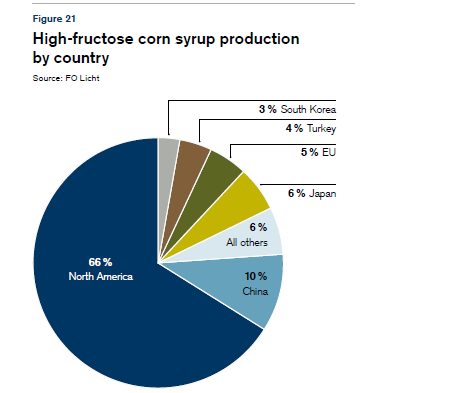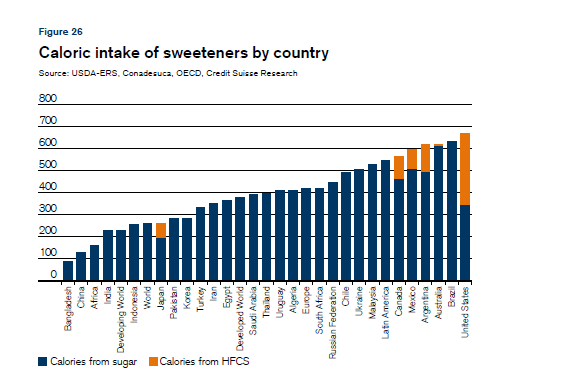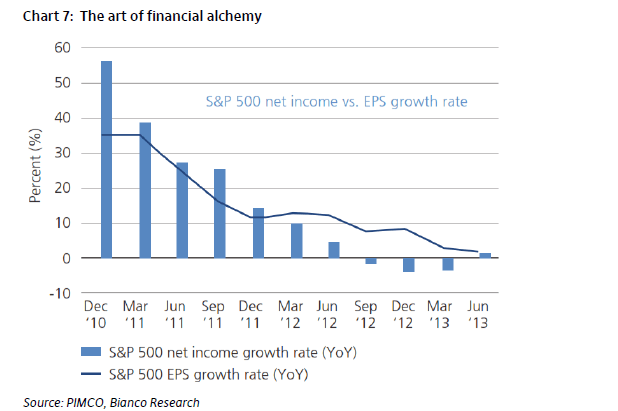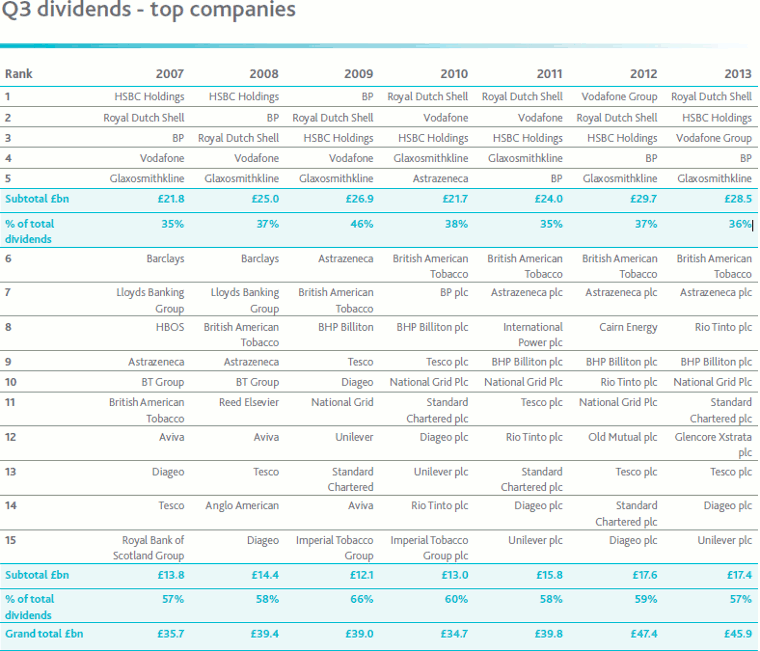High-Fructose Corn Syrup(HFCS) is used as a substitute for sugar. Since sugar prices are usually high compared to HFCS, HFCS is used by makers of food products in order to reduce cost. For example, Coca Cola (KO) in the U.S. does not contain sugar but only HFCS. As a result Coke tastes different compared to countries where sugar is used and is also very cheap. As an example, for the price of a single can of Coke from a vending machine in Paris,France sometimes one can buy a 12-pack in U.S. grocery stores. Some foreigners visiting the U.S. hate the taste of Coke due to the HFCS but Americans have no problems with it.
The graph below shows the High-Fructose Corn Syrup producers by country:
Click to enlarge
The following chart shows the caloric intake of sweeteners by country:
Source: Sugar – Consumption at a crossroads, Credit Suisse
North American is a major consumer of HFCS with the U.S. leading the list. Countries such China, India, Algeria, Turkey, etc. do not consume HFCS.
Disclosure: No Positions



